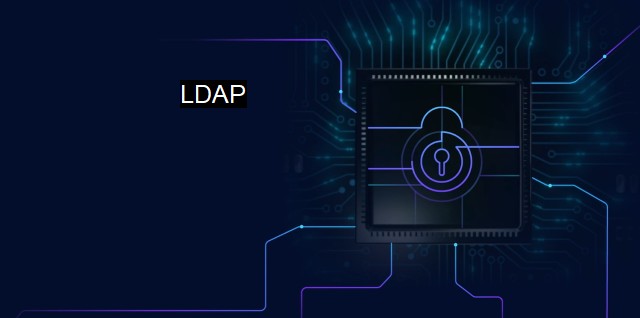What is LDAP?
The Vital Role of LDAP in Cybersecurity and Antivirus: An In-Depth Analysis of "Lightweight Directory Access Protocol"
Lightweight Directory Access Protocol, often referred to as LDAP, is a standard protocol that applications use to manage and access structured information over a network. Developers broadly use it for authenticating and authorizing users within and across organizational domains, as it streamlines user administration within large organizations by eliminating the need for redundancies this is crucial when you're attempting to build security parameters within an organization effectively. While LDAP only transmits the data, the actual storage and architecture structure for this information is handled outside LDAP, usually through databases.Under the cybersecurity context, the implementation of LDAP offers multiple benefits, one of the crucial ones being the avoidance of data duplication. Without LDAP, user credentials and their respective permissions would have to be entered and stored redundantly for each application within an organization. LDAP efficiently centralizes this process, ensuring a single source of user credential information for better management and control. It means that the staff in charge of information systems, network or systems security within a large organization, reduces the number of faults in password management that could otherwise be a possible vantage point for hackers.
Network administrators can apply security measures such as access control, firewalls, or IPsec to the data store or server containing LDAP - ramping up security levels across the organizational network to effectively step up an organization's cybersecurity defenses. LDAP enables administrators to implement organization-wide policies enforcing ideal security practices, such as regular password updates and the use of certain password complexity rules as dictated by a password policy.
While the heavily optimized and centralized system poses numerous security benefits for organizations, it is not without potential downfalls. The most notable consideration is the enforcement of digital security with LDAP. Despite its advantages, LDAP at its base level doesn't supply an inherent encryption for sensitive data during transmission. This makes it susceptible to 'Man-in-the-middle' attacks, where third parties could intercept and potentially read or modify data being transmitted. Considering this, it is vital that the organizations using LDAP for managing user credentials should pair it with secure layers such as SSL (Secure Socket Layer) or TLS (Transport Layer Security) for data encryption during exchanges.
LDAP also offers enormous benefits in managing a significant number of antivirus systems within an organization. Modern anti-virus software typically includes a centralized console enables IT staff to monitor and manage antivirus services throughout a network. LDAP can be used to manage access to this console, providing a robust and secure way to control who can manage organizational resources. Also, with LDAP-enabled antivirus solutions, organizations can ensure that all user systems within the network are registered with the antivirus system, and any resource that doesn't have the required software can be isolated and remedied.
It is important to note that although LDAP is a recommended tool for a programmer or a network administrator for streamlining authentication and fortifying your organization's cybersecurity, information online could be compromised if not appropriately managed or layered with other safeguards. Close monitoring of the LDAP implementations and dedicated efforts towards encryption protection measures (like SSL and TLS) can ensure the proper use of LDAP in an above standard cybersecurity context, therefore, maintaining the integrity and trust in the system.
LDAP offers high value in managing various security concerns surrounding user authentication and authorization, serving as a centralized hub for user credentials and security policy enforcement. In the context of cybersecurity and antivirus management, it plays a crucial role by providing an extra layer of network security and helping in seamless antivirus systems management.

LDAP FAQs
What is LDAP in the context of cybersecurity and antivirus?
LDAP stands for Lightweight Directory Access Protocol. It is a protocol used to manage and access information in a directory service. In the context of cybersecurity and antivirus, LDAP is used to manage and authenticate user access to various services and applications.How does LDAP improve cybersecurity and antivirus?
LDAP improves cybersecurity and antivirus by providing a centralized and secure directory service for authentication and authorization. This ensures that only authorized users have access to sensitive applications and data, minimizing the risk of unauthorized access or data breaches.What are some common LDAP vulnerabilities in cybersecurity and antivirus?
Common LDAP vulnerabilities in cybersecurity and antivirus include unsecured connections, weak credentials, and LDAP injection attacks. It is important to properly configure and secure LDAP servers to prevent these vulnerabilities from being exploited by attackers.How can organizations safeguard against LDAP-related cybersecurity and antivirus threats?
Organizations can safeguard against LDAP-related cybersecurity and antivirus threats by implementing strong password policies, restricting access to LDAP servers, and regularly monitoring and auditing LDAP activity for suspicious activity. Additionally, organizations should keep their LDAP servers up-to-date with the latest security patches and implement multi-factor authentication to further enhance security.| | A | | | B | | | C | | | D | | | E | | | F | | | G | | | H | | | I | | | J | | | K | | | L | | | M | |
| | N | | | O | | | P | | | Q | | | R | | | S | | | T | | | U | | | V | | | W | | | X | | | Y | | | Z | |
| | 1 | | | 2 | | | 3 | | | 4 | | | 7 | | | 8 | | |||||||